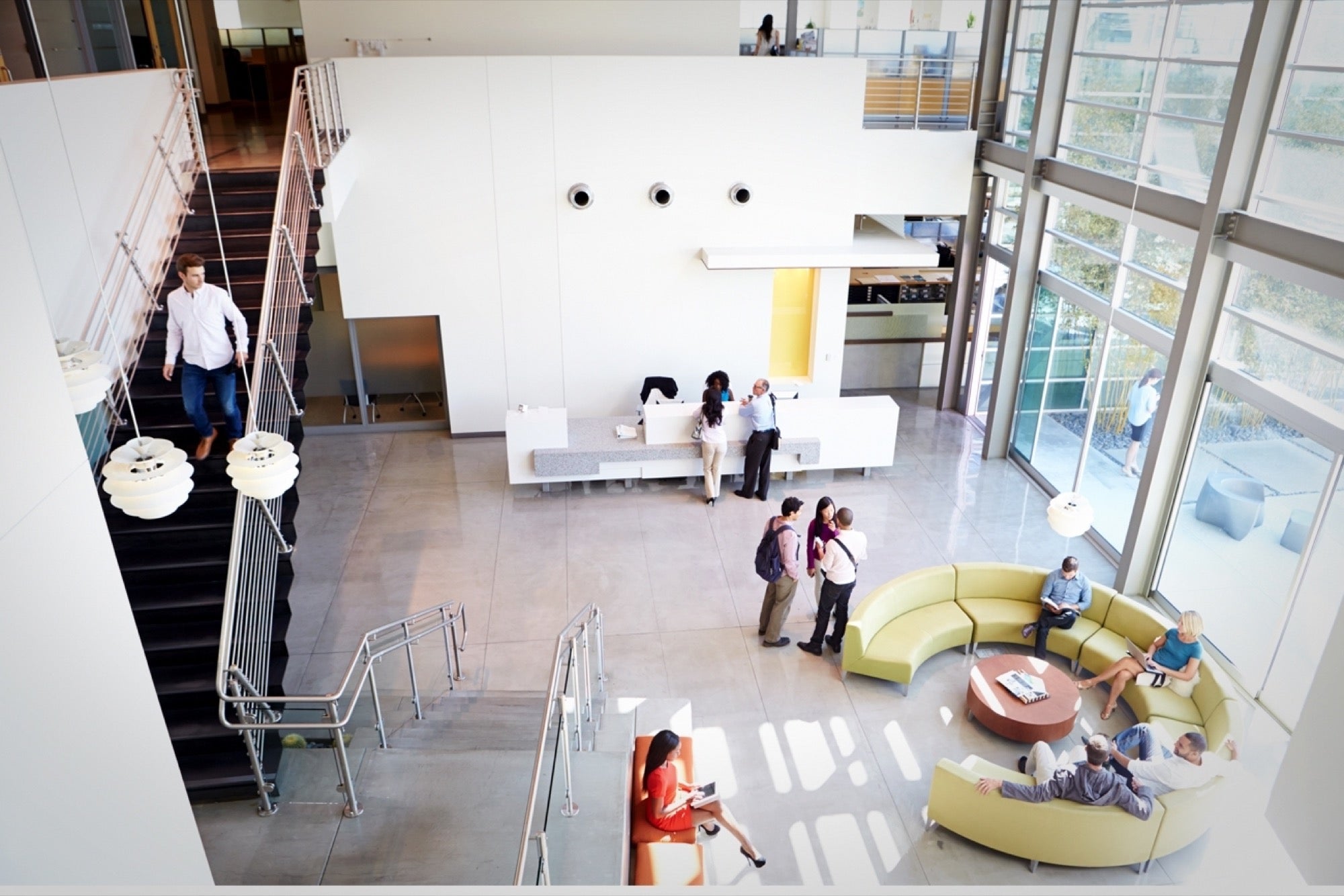Sponsored Content | Brand Spotlight Partner What's This?
How the Optimized Office Pushes Productivity Create an environment that keeps teams happy and engaged while supporting their health and well-being.

When it comes to office design, one size rarely fits all. "Employees are the most valuable assets that a company has, so it makes sense to design workspaces that support them and maximize that value," says Suzanne Carlson, principal at New York City design and planning firm NBBJ. "As we work with clients to understand how they function from a business perspective, we share with them the idea of creating an environment that makes people happy, that engages them, and that supports their health and wellbeing. We believe that this will increase individual and organizational performance."
Here are a few suggestions for optimizing your company's workspace:
- Offer variety. People need a variety of environments not only to work productively, but to thrive. Arranging an office space into "zones" can make this happen. Collaboration zones, for instance, are open spaces where groups could work together and exchange ideas. Quiet zones offer space for more contemplative work. Private zones would work like private offices, but be available to anyone. And recreation zones offer a more relaxed way for employees to interact. "We all need the opportunity to work in different environments, depending upon the work we're doing," Carlson says. "A range of work settings support today's workplace best."
- Provide access, not ownership. Probably the biggest cultural shift the new office space requires is that space is no longer "owned," but shared in a way that provides access to all. "In today's sharing economy, things like bike shares and tool libraries mean you don't have to own things you don't use all the time," Carlson explains. "Instead, you have access to them when you need them. The shift from ownership to access is also very applicable to the office space."
- Integrate work and life. Much of this new thinking in office design has been realized thanks to the advances in mobile technology, which give employees access to information and communication no matter where they are. While many lament the inevitable overlap of work and private life, Carlson sees the advantages of not simply acknowledging employees' private lives, but finding ways to support them in what they're doing outside the office.
- Culture is as important as environment. None of these innovations are possible, Carlson points out, without a parallel shift in corporate culture. "Cultural permission has a lot to do with the success of these environments," she says. "You have to trust individuals to go where they need to go. If you build spaces for people to collaborate, and then nobody uses them because they feel like they'll appear to be goofing off, that's not going to be productive."
Designing your company's workspace is anything but an afterthought. It can have a dramatic effect on wellbeing, efficiency and productivity. The key is to place your employees' needs first and give them the freedom to work to the best of their abilities.
Lincoln MKC: A Beautifully Practical Working and Living Space
With premium materials, like authentic aluminum and available wood-enhanced rich, soft-touch surfaces, glove-soft leather seating, and an available, expansive Vista Roof® for a wide-open look at the world above, the Lincoln MKC provides a nature-inspired, yet high-tech environment that's connected to the surrounding world. It's an optimal space in which to work and live. Coupled with 25.2 cubic feet of cargo space, an exclusive Hands-Free Liftgate, and Active Park Assist, the Lincoln MKC creates a driving environment that puts your needs first.
Learn more about the Lincoln MKC at http://www.lincoln.com/crossovers/mkc.